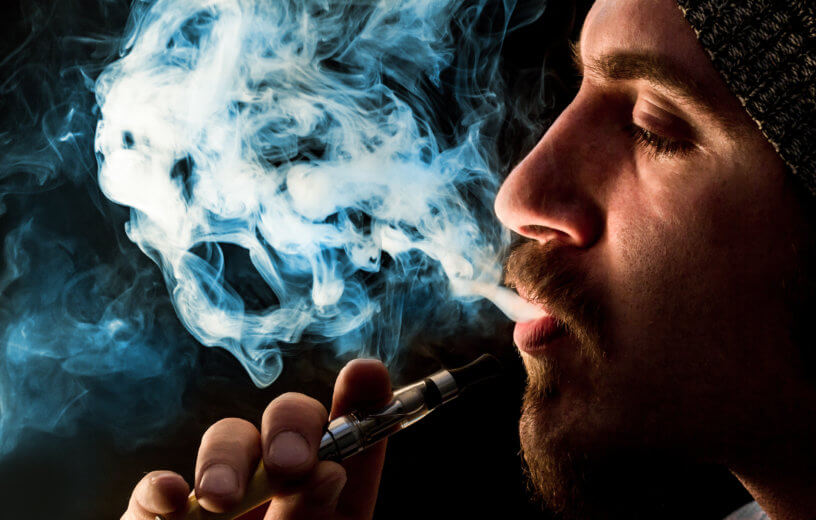MEDFORD, Mass. — Vaping could ruin someone’s smile by increasing the risk of developing dental cavities, a new study warns.
Researchers from Tufts University say after inhaling, the sticky and sugary content of the vaping liquid sticks to the teeth — causing all the damage. The liquid also changes the microbiome of the mouth, making it more hospitable to decay-causing bacteria.
Moreover, vaping appears to encourage decay in areas where it usually doesn’t occur, such as the bottom edges of front teeth.
The Centers for Disease Control and Prevention (CDC) reports that 9.1 million American adults and two million teenagers use tobacco-based vaping products, meaning there are a lot of vulnerable teeth across the country. The CDC also reports that 7.6 percent of 11 to 18-year-olds used e-cigarettes in 2021.
Researchers say that over the last few years, public awareness has increased about the dangers of vaping, particularly after studies tied vaping devices to the development of lung disease.
Dr. Karina Irusa, an assistant professor of comprehensive care at Tufts University School of Dental Medicine adds that some dental research ties e-cigarette use and increased red flags for gum disease and damage to the tooth’s enamel — its outer shell.
Despite this, there has been relatively little emphasis on the connection between e-cigarette use and oral health, even by dentists, according to the new study. The research team analyzed the data from more than 13,000 patients over the age of 16 treated at Tufts dental clinics from 2019 to 2022.
The team found that while the vast majority of patients did not use vapes, there was a significant difference in the risk of cavities between those who used them and the control group. The data revealed that 79 percent of vaping patients had a high risk of suffering from cavities, while around only 60 percent of the control group had a similar level of risk.
Vapers may need constant dental care
The vaping patients were not asked whether they used devices that contained nicotine or THC, although nicotine is more common. The researchers recommend that people who vape focus more on rigorous dental care to prevent cavities. This could include prescription-strength fluoride toothpaste and fluoride rinse, in-office fluoride applications, and check-ups more often than twice a year.
Dr. Irusa believes these new findings may be just a hint of the damage vaping causes to the mouth.
“The extent of the effects on dental health, specifically on dental decay, are still relatively unknown,” Irusa says in a statement. “At this point, I’m just trying to raise awareness,” among both dentists and patients.
“It’s important to understand this is preliminary data,” the researcher adds. “This is not 100% conclusive, but people do need to be aware of what we’re seeing.”
Dr. Irusa and her team now want to take a closer look at how vaping affects the microbiology of saliva to further their research.
“It takes a lot of investment of time and money to manage dental caries, depending on how bad it gets,” Irusa concludes. “Once you’ve started the habit, even if you get fillings, as long as you continue, you’re still at risk of secondary caries. It’s a vicious cycle that will not stop.”
A previous study, published in the journal PLoS ONE, compared e-cigarettes to gummy sweets and acidic drinks. The report found “certain e-liquid ingredients interact with hard tissues of the oral cavity in such a way that resembles high-sucrose candies and acidic drinks that adversely affect teeth.”
The current study is published in The Journal of the American Dental Association.
South West News Service writer Alice Clifford contributed to this report.


Ive vaped heavily for almost 10 years now and had no increase or unusual cavity development. I’m not sure what liquid is sugary as they describe, but most liquids are just vegetable glycerin and propylene glycol, with flavoring. Those do not normally contain sugar. This smacks of more pseudoscience brought to you by corporations financially affected by alternatives to their much more dangerous products.
Thanks. Is was wondering where the sugar came from. Are there sugary flavors available?